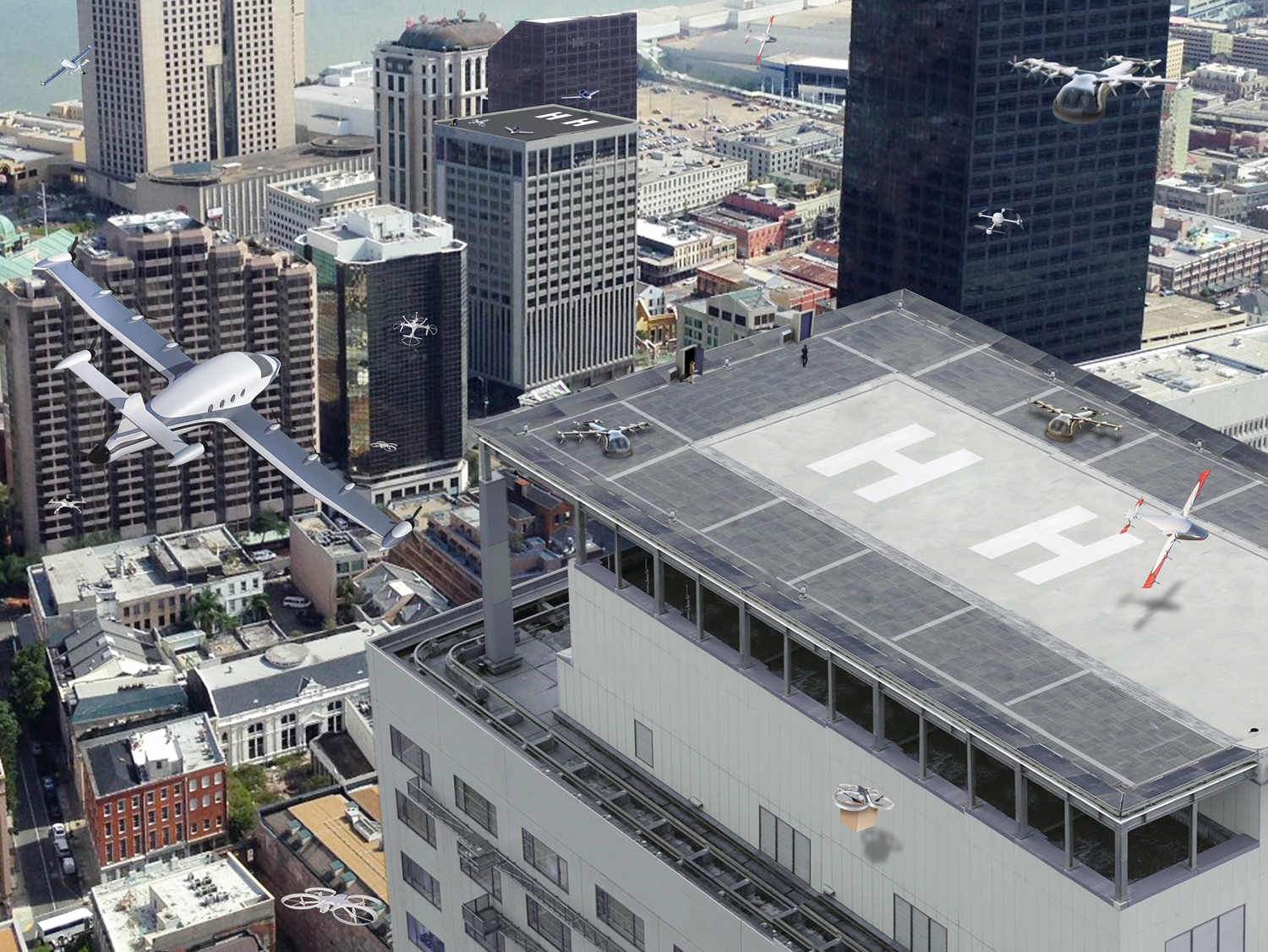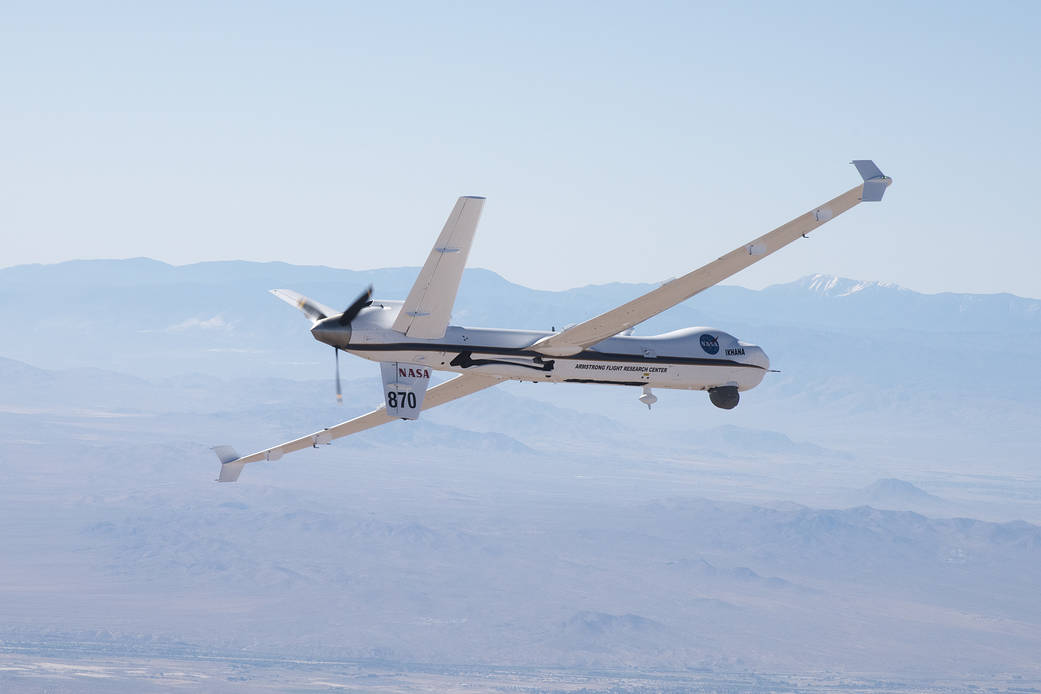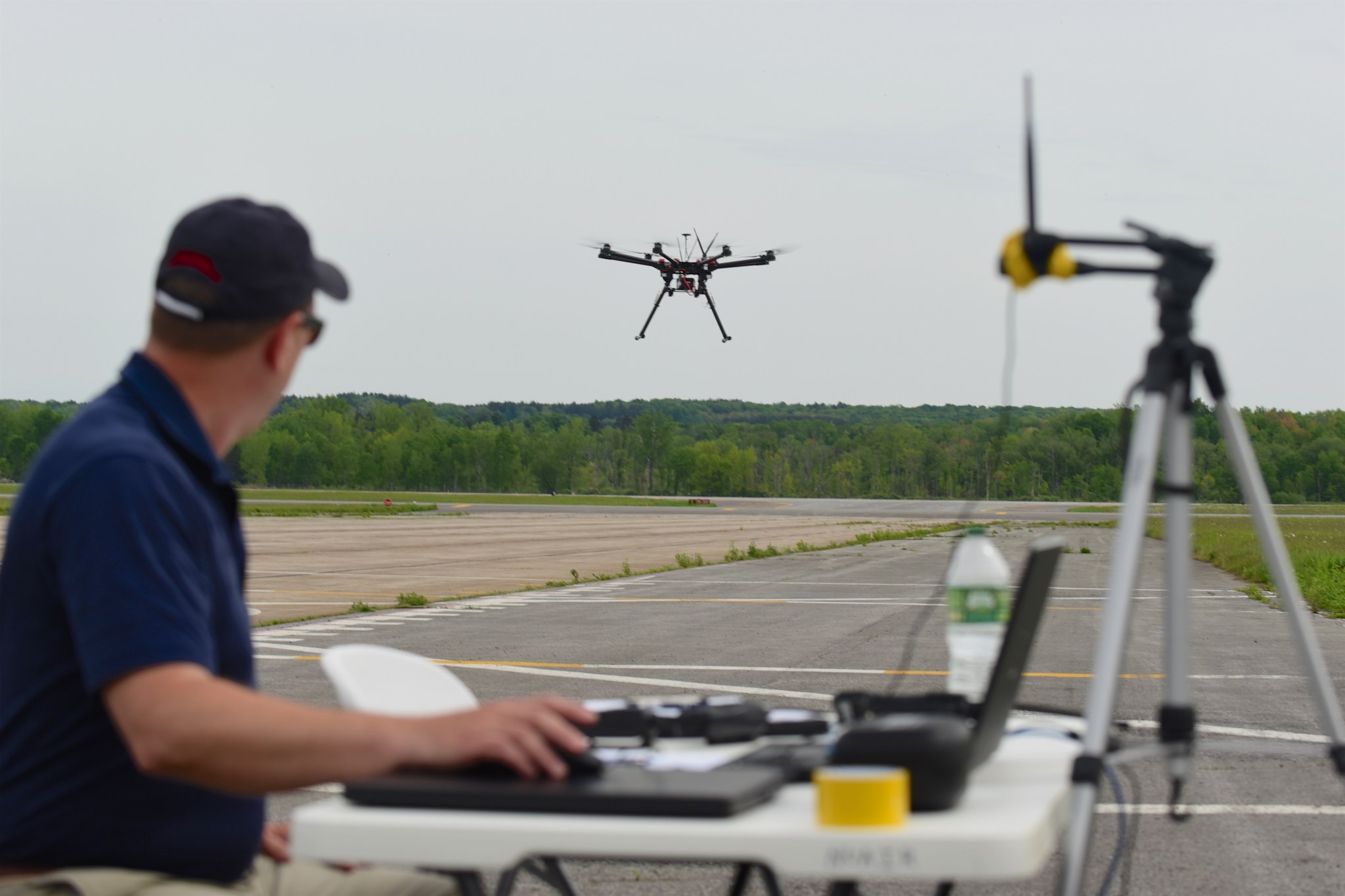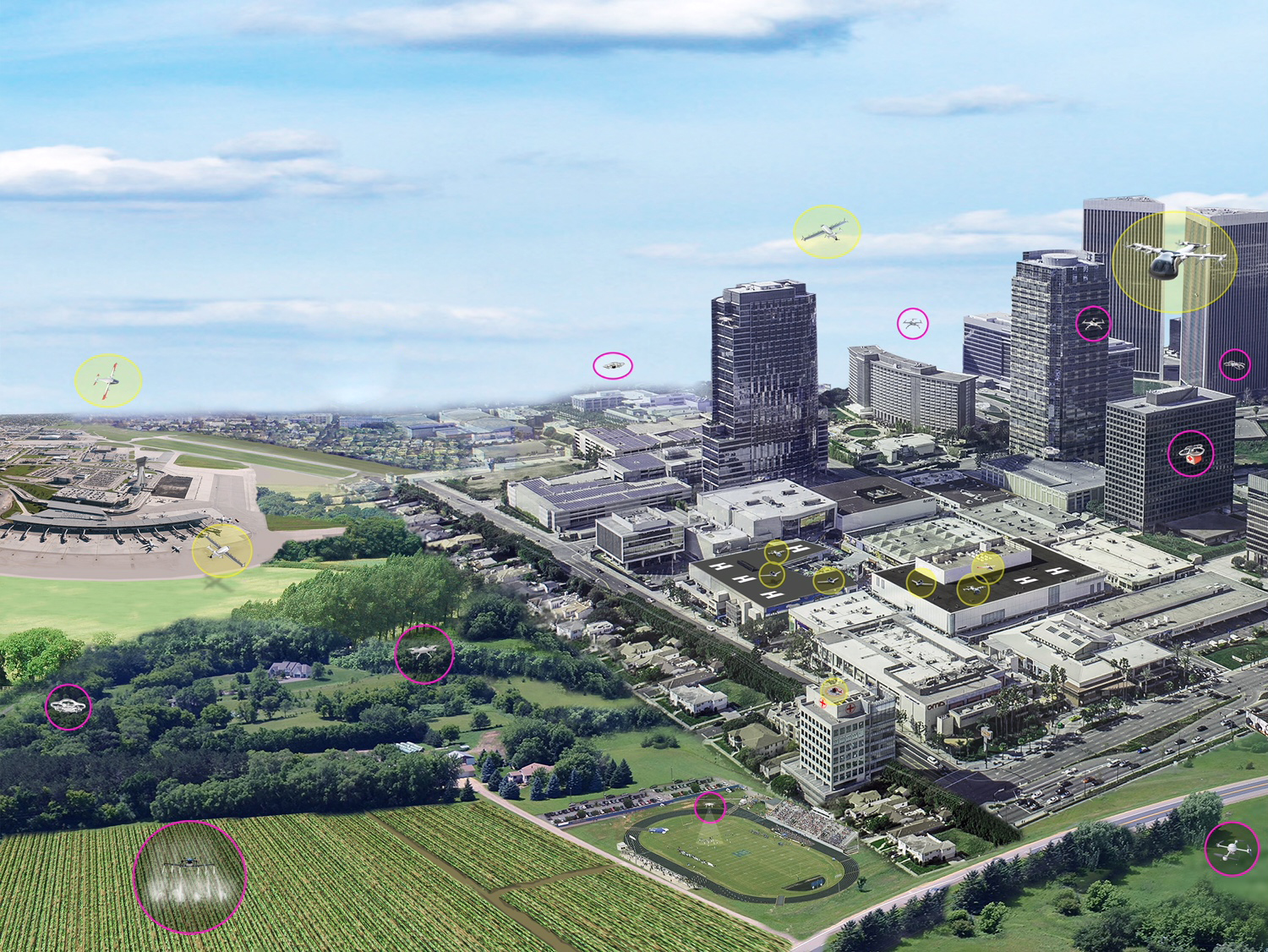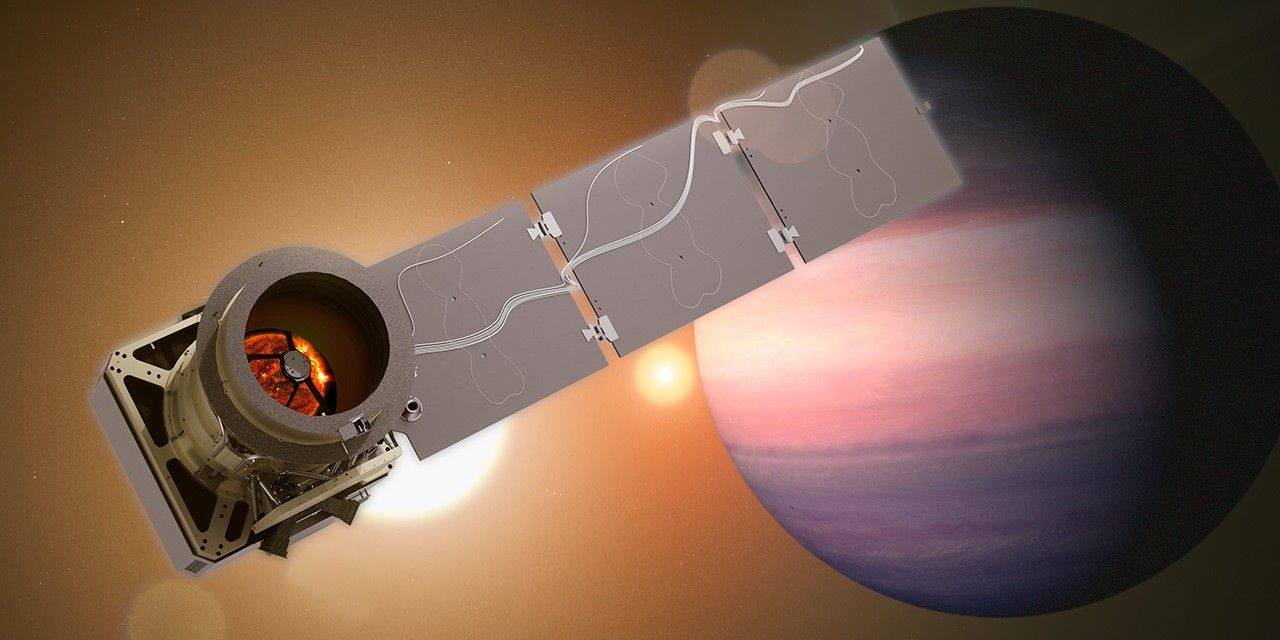NASA’s Aeronautics Research Mission Directorate (ARMD) conducts research based on a deliberate and well-coordinated strategic implementation plan. This plan is being expanded to include research into an area emerging so quickly there’s no page for it yet on Wikipedia.
It’s Urban Air Mobility, or UAM.
Our definition for UAM is a safe and efficient system for air passenger and cargo transportation within an urban area, inclusive of small package delivery and other urban Unmanned Aerial Systems (UAS) services, which supports a mix of onboard/ground-piloted and increasingly autonomous operations.
Several companies, both large and small, are starting to develop the infrastructure to make UAM a reality, and they are planning to do this much sooner than you think.
Fortunately, we’re ready to meet the increasing emphasis on UAM thanks to our decades of successful work on improving air traffic management and, more recently, the past six years of work on how to safely integrate UAS, more commonly known as drones, into the national airspace on a routine basis. We’ve created effective partnerships with industry, academia and the Federal Aviation Administration (FAA) to identify and seek solutions to the challenges unique to accommodating remotely piloted aircraft.
“NASA has the knowledge and the expertise to help make urban air mobility happen,” said Jaiwon Shin, NASA’s associate administrator for aeronautics. “We plan to conduct the research and development, and test the concepts and technologies that establish feasibility and help set the requirements. Those requirements then serve to make using autonomous vehicles, electric propulsion, and high density airspace operations in the urban environment safe, efficient and economically viable.”
In 2011, ARMD started our Unmanned Aircraft Systems Integration in the National Airspace System project, or UAS in the NAS. This project was designed to reduce the technical barriers related to safety and the operational challenges associated with integrating larger-sized UAS — those that weigh 55 pounds or more and fly higher than 500 feet, including full-size repurposed Predators and Global Hawks, into the national airspace.
Then, with the explosive growth and popularity of smaller drones, especially like those that have flown off store shelves the last few years, we started the UAS Traffic Management (UTM) project in 2015.
The focus of UTM research is to identify the technologies and procedures that will enable these smaller drones to safely fly at lower altitudes in airspace not routinely controlled by the FAA.
Beginning with demonstration flights over a rural area, where ground pilots maintained constant visual contact with their drones, the UTM project is flying ever more ambitious tests that extend the distance between pilot and drone, and take place over increasingly more populated areas.
“Much of the work being done in these two projects will be directly applicable to the UAM research we anticipate we will be doing,” said Parimal Kopardekar, who is senior technologist for air transportation systems at NASA’s Ames Research Center in Silicon Valley. “And we will continue to deploy the same partnership approach from UTM that’s worked so well.”
UAM Challenges Require Collaboration
Some of the barriers to urban air mobility operations include safety certification of autonomous vehicle systems, community noise impacts from vehicle operations, cyber security protections, safe airspace integration with traditional airline operations, and many others. These issues are closely tied to NASA’s current research portfolios. We are well positioned to collaborate with the FAA, industry, and academia to identify the requirements for safe UAM operations.
One of the most important certification concerns is to ensure the vehicles are safe to fly and to land, especially in emergency situations in crowded urban areas.
An example of an operational challenge is ensuring that vehicles, piloted or not, are integrated into an air traffic system in which parts of that system must be fully automated to handle the high frequency and density of projected operations.
Community acceptance of UAM operations is another challenge. While demonstrating safe and reliable operations is critically important, it is equally important that vehicle operations don’t create unacceptable community noise impacts, and that they fit into the urban land and skyscape.
NASA won’t have a direct hand in providing design input for these vehicles, but we can provide technical leadership in areas that require the UAM community to work together, such as the safety, operational integration, and community noise challenges. For example, we and our industry partners can conduct joint flight tests to generate data that drive analyses to support the creation of industry standards, FAA rules and procedures, and even city ordinances.
That’s the type of role NASA is likely to play as the UAM-related work is laid out and begins.
“We believe our job is to create opportunities for the UAM community to work together toward the common goal of safe, efficient and quiet operations,” said Rich Wahls, NASA’s strategic technical advisor in the Advanced Air Vehicles Program for ARMD. “We have a unique role to play in leading collaborative efforts that leverage the knowledge, technologies and visions of everyone coming to the table.”
Study will Define UAM Market
We are starting our UAM journey with an objective look at the market potential in order to better understand the issues and gauge the speed with which it may develop.
ARMD recently awarded contracts to Booz Allen Hamilton of McLean, Virginia and Crown Consulting, Inc., of Arlington, Virginia to conduct thorough UAM market studies. These studies will spell out the policy, economic, social, environmental, and legal barriers to enabling UAM; and estimate how much potential demand there is for UAM now and in the future.
“The industry is working hard to develop these markets, but how long will it take? And how big are the challenges that must be overcome? The information they will gather will help us decide how quickly and how best to deploy our resources to help,” Wahls said.
The UAM market studies will help ensure that we’re developing the most relevant and appropriate research agenda and set us on the right path to creating high impact industry partnerships.
“With UAM’s potential to make such a huge difference in all of our lives in the very near future, we want to be sure we’re investing in the best areas of research that will help industry to make this happen,” Shin said.


























